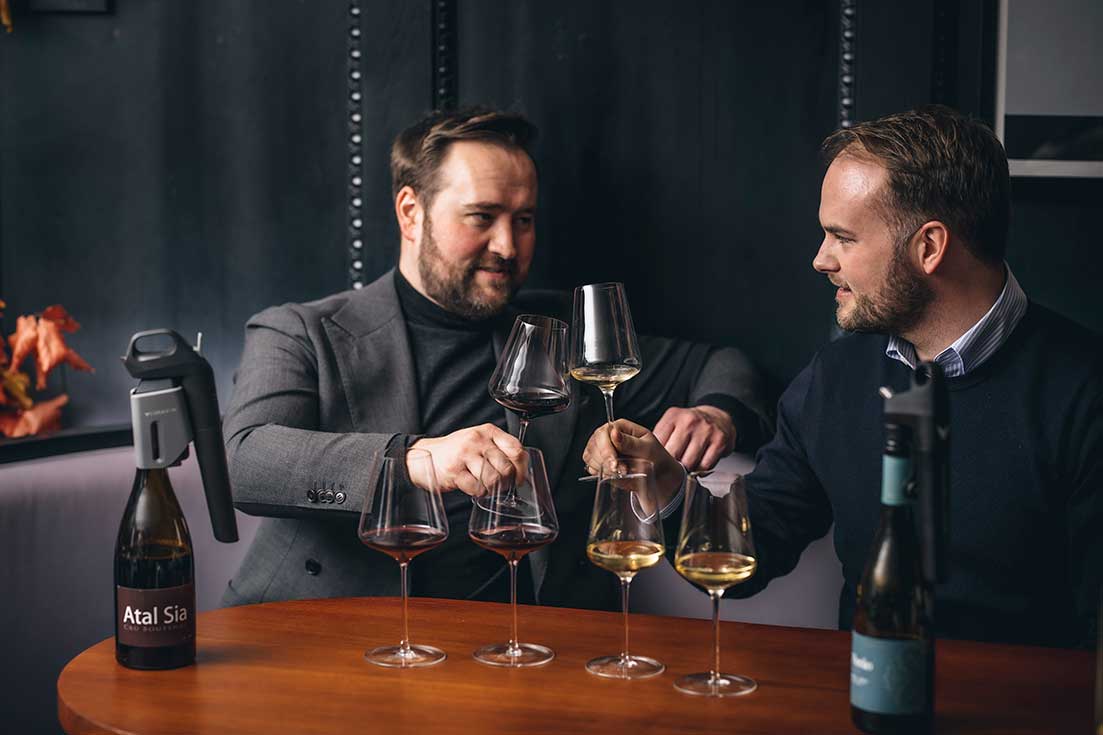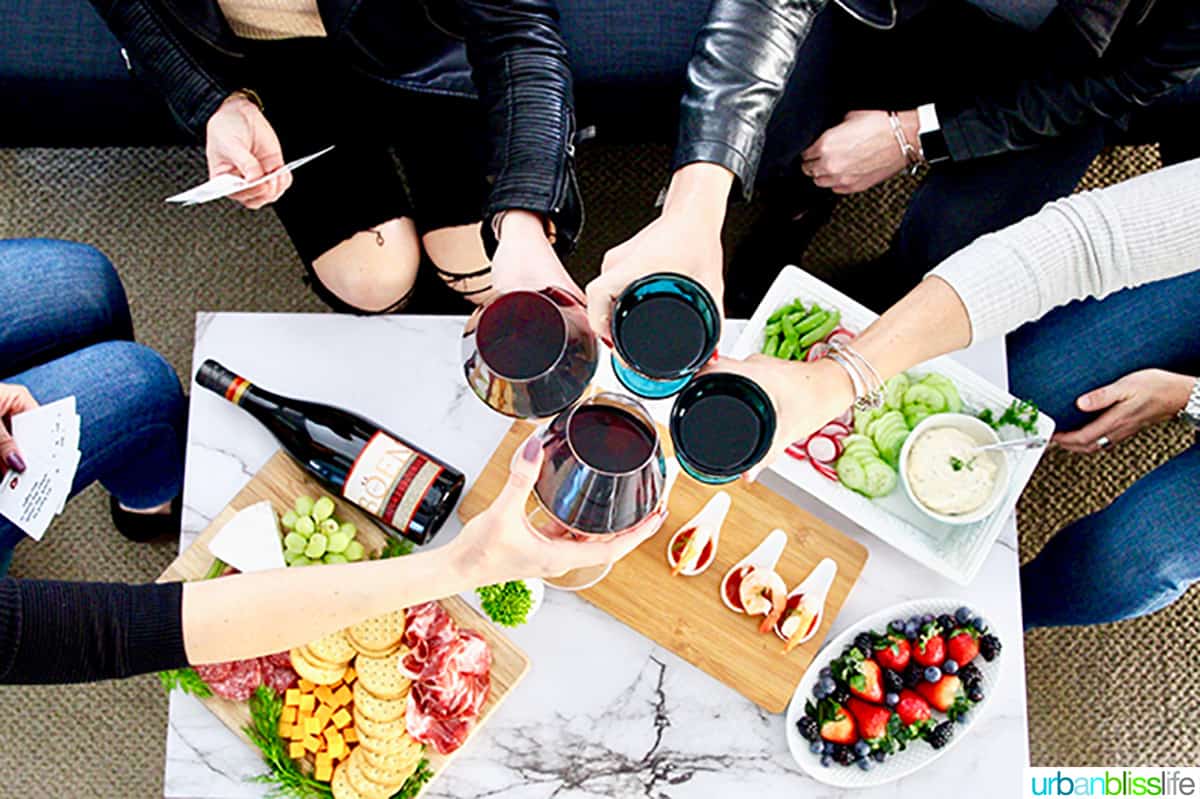Wine tasting can seem like a mysterious, almost intimidating art form, especially to beginners. Between swirling glasses, sniffing aromas, and discussing notes of blackberry or “wet slate,” it’s easy to feel overwhelmed. But the truth is, wine tasting isn’t about knowing all the jargon it’s about learning to trust your senses and developing a deeper appreciation for what’s in your glass. Whether you’re sipping at a vineyard, enjoying a dinner party, or exploring a new bottle at home, here’s a step-by-step guide to help you taste wine like a pro.
Step 1: Look – Observe the Wine’s Appearance
Before you even take a sip, take a good look at your wine. Tilt your glass at a slight angle against a white background (like a napkin or tablecloth) to examine the color and clarity. The visual aspect of wine offers valuable clues about its age, grape variety, and potential flavors.
-
Color: White wines range from pale straw to deep gold, while reds vary from light ruby to inky purple. Older red wines may lean toward brick or garnet hues, while aged whites might appear deeper and more golden.
-
Clarity: A clear, brilliant wine often indicates proper filtration and good condition. A cloudy appearance could suggest a fault, though some natural or unfiltered wines are intentionally hazy.
This step helps prime your senses and sets the tone for the tasting experience.
Step 2: Swirl – Release the Aromas
Swirling the wine gently in your glass may seem theatrical, but it serves an important purpose. The motion aerates the wine, allowing oxygen to interact with it and release its aromatic compounds. Use a firm but controlled circular motion holding the stem of the glass helps maintain balance and avoids warming the wine with your hand.
Swirling is particularly helpful for red wines, which often need oxygen exposure to fully express their aromas. Once you’ve swirled, you’re ready for the next critical step.
Step 3: Smell – Discover the Bouquet
Your nose plays a crucial role in wine tasting much of what we perceive as flavor actually comes from smell. Place your nose at the rim of the glass and take a few deep but gentle sniffs. Try to identify the scents, starting broad and moving to specific.
Professional tasters often divide aromas into three categories:
-
Primary Aromas – These come from the grape itself and include fruity, floral, or herbal notes. For example, Sauvignon Blanc might smell like lime, green apple, or grass.
-
Secondary Aromas – These arise from the winemaking process, such as yeasty, creamy, or nutty scents from fermentation.
-
Tertiary Aromas – These develop with aging and can include complex notes like leather, tobacco, earth, or dried fruit.
Don’t worry if you can’t name every aroma at first. With practice, your sense of smell will become more refined, and you’ll start to recognize patterns and preferences.
Step 4: Taste – Analyze the Wine on Your Palate
Finally, it’s time to sip! Take a small amount into your mouth and let it coat your tongue. Pay attention to these key elements:
-
Sweetness: Is the wine dry, off-dry, or sweet? Most table wines are dry, but some whites and dessert wines contain residual sugar.
-
Acidity: Acidity makes wine taste fresh and crisp. You’ll feel it as a tingling sensation on the sides of your tongue. High-acid wines (like Riesling or Sauvignon Blanc) feel more mouthwatering.
-
Tannin: Mostly found in red wines, tannins come from grape skins and seeds. They create a drying sensation on your gums and can add structure or bitterness.
-
Body: This refers to the weight or fullness of the wine in your mouth—light, medium, or full-bodied. Alcohol, sugar, and tannins contribute to body.
-
Flavor Profile: Try to pick out the flavors. Do you taste berries, citrus, vanilla, or spice? Does the flavor evolve as you hold it on your tongue?
-
Finish: Notice how long the flavor lingers after swallowing. A long, complex finish is often a sign of a high-quality wine.
Swallow or spit, depending on the setting, but always take a moment to reflect before moving to the next wine.
Step 5: Think – Evaluate the Experience
After tasting, think about what you liked or didn’t like. Was the wine balanced? Did the acidity complement the fruitiness? Were the tannins too harsh or just right? You don’t need to be an expert to recognize quality or personal enjoyment. Jotting down notes can help you remember favorites and learn more about your preferences over time.
Consider keeping a wine journal or using a wine app to track your experiences. Over time, you’ll begin to see patterns—perhaps you favor earthy Pinot Noirs or vibrant Albariños—and you’ll become more confident in choosing wines that suit your palate.
Bonus Tips for Tasting Like a Pro
-
Use proper glassware: A tulip-shaped wine glass helps concentrate aromas and enhances the tasting experience.
-
Avoid strong odors: Perfume, scented lotions, or a room with strong food smells can interfere with your ability to smell the wine accurately.
-
Taste with food: Pairing wine with food can enhance or change its character. Try different combinations to see what works best.
-
Start with lighter wines: If you’re tasting several wines, begin with whites or lighter reds before moving to bold, full-bodied styles.
Conclusion
Tasting wine like a pro isn’t about impressing others—it’s about slowing down and savoring the complexity of what’s in your glass. By looking, swirling, smelling, tasting, and thinking critically about wine, you engage all your senses and enrich your appreciation of this ancient beverage. Whether you’re a curious beginner or an aspiring connoisseur, every bottle is a new opportunity to learn and enjoy. So pour yourself a glass, follow these steps, and start your journey into the world of wine with confidence and curiosity. Cheers!



